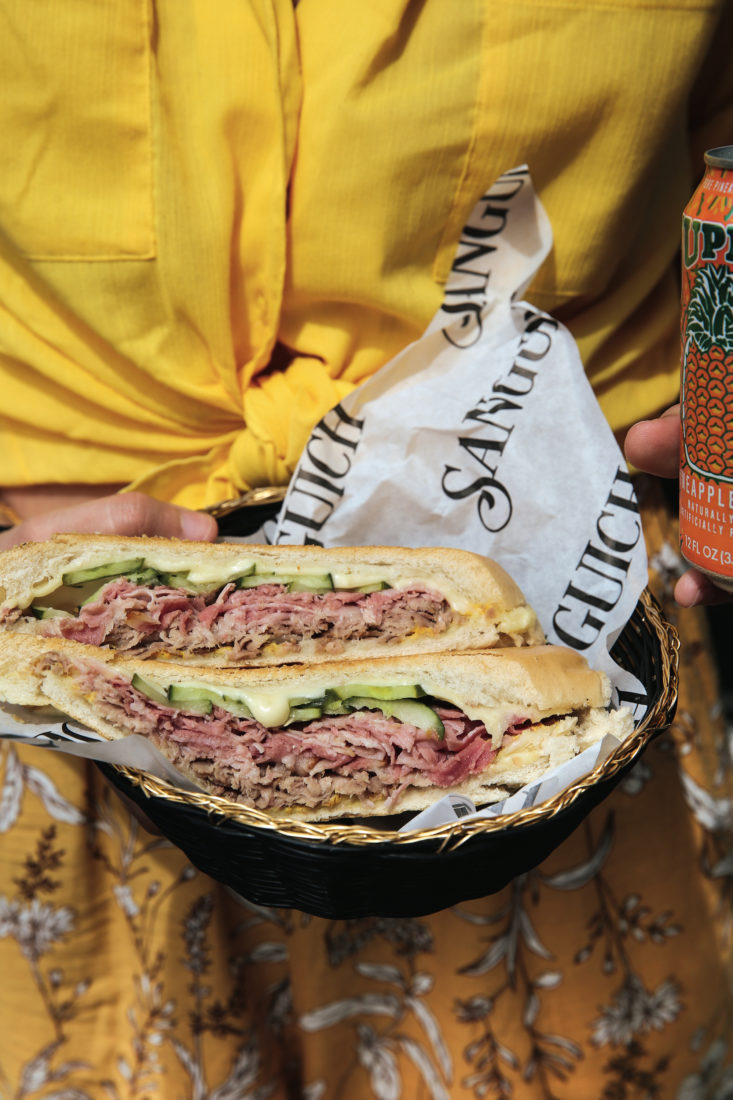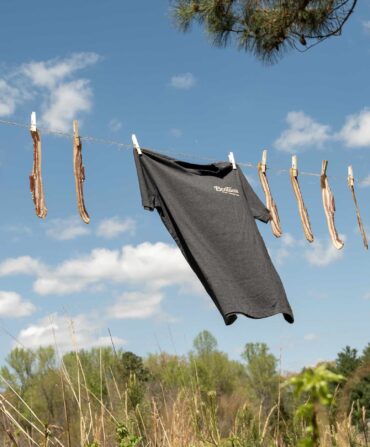“This is it,” a father says to his daughter as she reaches for a Cuban sandwich, pressed with rendered lard, sliced on the diagonal, and stacked in a gold-rimmed basket to reveal the layers of ham, roasted pork, Swiss cheese, and pickles within. “This is it,” the daughter says to her mother, pulling at a strand of cheese that has melted down the side of the bread and gone brown under the weight and heat of a cast-iron machine that looks like a supersized trouser press. Then mother, father, and daughter snap photos of their sandwiches to post on social media.
Flower boxes frame the entrance to Sanguich, a shotgun café on Calle Ocho, the main drag in Miami’s Little Havana. Tourists walk the palm-shaded streets here to shop for guayabera shirts and fat cigars. Cubans began immigrating here in great numbers after the 1959 revolution, and today, Cuban Americans wheel into Sanguich hungry for a taste of the island nation their forebears left behind.
From a street window, clerks serve milkshakes, called batidos, churned with mamey or banana. And café con leche in cup-and-saucer sets blazoned with the gold Sanguich logo script. Open as a brick-and-mortar business since 2018, Sanguich gets the look right: Cement floor tiles, in a mosaic of jade and caramel, reflect the deep green of the paneled walls. A white marble counter, set with bentwood stools, divides the galley kitchen from a row of two-top tables. Spanglish is the mother tongue. The band ¡Cubanismo!, heavy on the conga and trumpet, plays from overhead speakers.
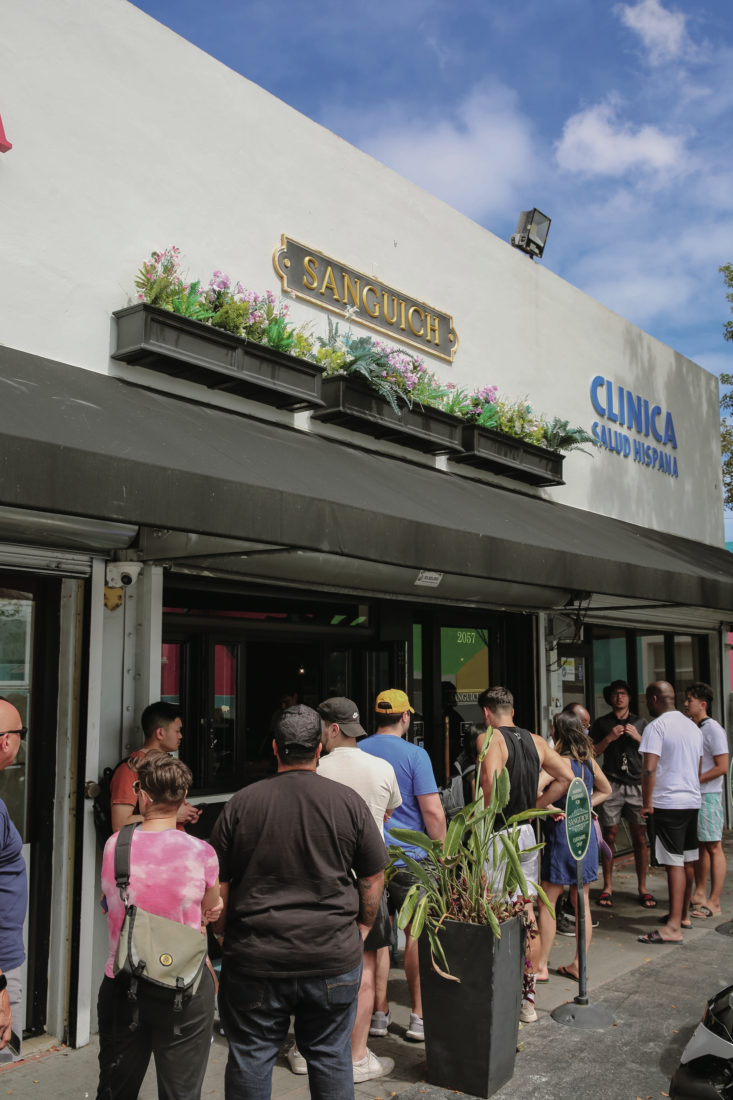
Sanguich conjures memories of Cuba, where what we now call Cuban sandwiches, built on long, downy loaves, most likely emerged in the late nineteenth century. But husband-and-wife owners Daniel Figueredo and Rosa Romero rely on modern technology as much as memories. She manages operations, from provisioning to training. He grows the business and serves as engineer and architect.
“I think in a mechanical fashion,” Figueredo says of developing Sanguich. He previously worked for the watches and jewelry division of Louis Vuitton. That’s another way of saying that he knows how to make and exhibit beautiful products, worthy of Instagram posts by a family of three. And Romero knows how to design teachable processes, executed by kitchen crews.
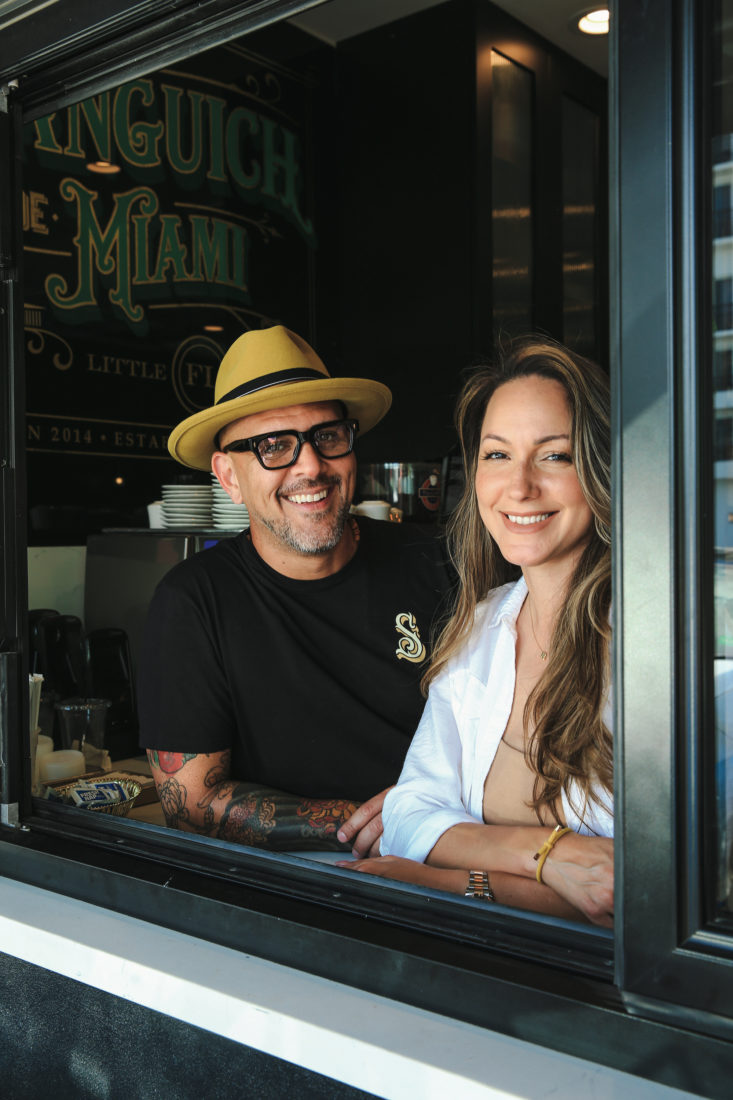
Figueredo and Romero believe that the traditional Cuban sandwich has suffered a long decline. “The Cuban sandwich was our fast food,” Figueredo says, speaking of both Cuba and Miami. “It was what we put in our lunch boxes.” But that’s gone now, he says. “We have lost our ability to determine what is a great Cuban.” With Sanguich, they aim to reintroduce the old Cuban sandwich to a new Miami.
Flat-screens, mounted above the assembly stations, monitor the time between the moment you order at the counter and when your sandwich arrives. Tickets pop up with a digital ding. Figueredo paces the kitchen, bantering with customers. “We sous vide our top round for sixteen hours,” he says of the beef at the core of his pan con bistec sandwich, stacked with shoestring potatoes and smeared with a red bell pepper sauce. “We make our own pickles,” he reminds regulars who flock for the traditional Cuban sandwiches that are his best sellers. “We brine our own hams. Our mustard takes twenty days to ferment and mellow.”
A similar effort came out of New Orleans after the levee failures that followed Hurricane Katrina in 2005. In 2008, Ben Wicks, who had cooked in fine-dining restaurants, opened Mahony’s, a po’boy shop where, instead of relying on imports, he used Louisiana shrimp and local tomatoes. He hand cut the potatoes for his french fry po’boys, drenched in gravy. And he declared that po’boys were defining symbols of his city, under existential threat, awaiting renaissance.
Like Wicks, Figueredo and Romero also lavish attention on their sides. Croquetas here are fat nubs, raspy with panko on the outside, creamed with ham on the inside, and served with bullets of vinegary mojo sauce. Chewy, dense, and delicious, plantain fries, cut into thin twigs, get deep-fried to order. Built on a base of plantain chips, nachos come topped with house-roasted pork and drizzled with garlic-cilantro aioli. Each taste signals less a reinvention than a reanimation of the Cuban American sandwich shop playbook.
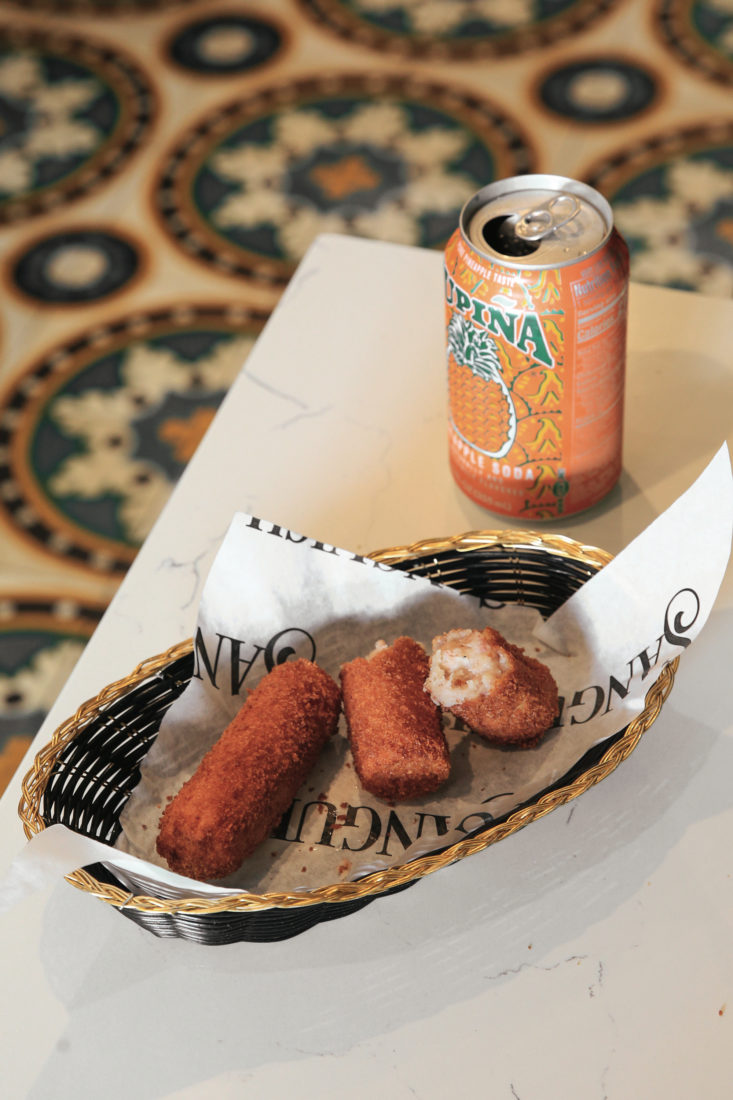
“A sandwich is a relatable thing,” Figueredo says. “We give everyone the opportunity to sit at the same counter and break bread.” Toasted until the loaves are so crisp that they’re really all crust, sandwiches here are more than fuel for a day of work or play. They are totems of identity and hallmarks of pleasure, and with a little luck they will soon be more widely available.
Owing to the systems Figueredo and Romero have developed, Sanguich can now turn out more than five hundred sandwiches a day. They are building a commissary that will serve three new Miami-area locations slated to open this year. Goldbelly shipping is already online. “We want to be the company that represents Cuba to this country,” Figueredo says. Plans for Chicago and New York are afoot. Then your city, and, hopefully, mine.


